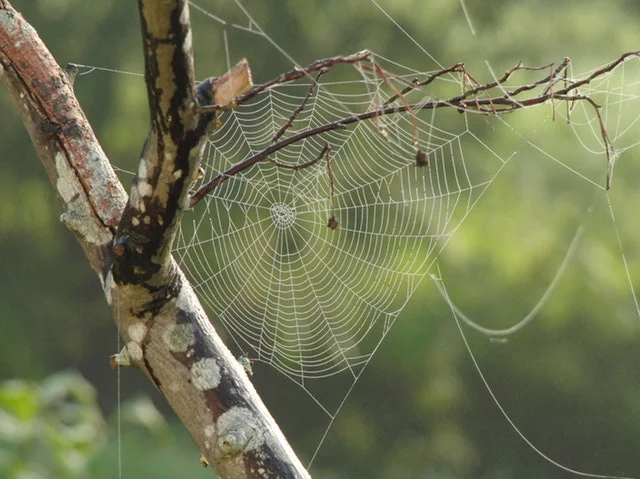Web-producing pest infestations are an unsightly problem for trees and can seem to appear out of nowhere. And you may wonder, what kind of spider builds webs in trees? Surprisingly, it isn’t a spider. It’s another tree pest – fall webworms. So, what they are, why do they make webs and how do you get rid of those “spider webs” in your tree?
Fall webworms, which act more like caterpillars than spiders, will create large masses of unsightly webbing on the ends of tree branches. Once matured, the worms will eat everything but the larger leaf veins, always feeding inside their web and expanding its size as more food is needed.
What’s the lifecycle of fall webworms?
As implied by their name, they are typically at their peak in the fall. However, they actually exist all year-round. In winter, they lay eggs which hatch in the spring. Come summer, those caterpillars eat your tree leaves and begin spinning webs in time for fall.
Do fall webworms damage your trees?
Though fall webworms are quite the eyesore, that’s about their only threat. These worms are not poisonous and will not do damage to an established, healthy tree. However, webworms can pose a threat to younger trees. As webworms feed on young trees, they can cause complete leaf loss before the tree has a chance to thrive. In this case, it’s imperative that you step in and stop the pest.
Read Our Other Blogs
What are the treatment options?
In terms of preventative steps, regular pruning will stop these webs from even forming. However, if a web has been spun, use a tool like a broom to remove it from branches and improve the look of your trees. It’s important to point out though that webworms live in cocoons in the winter rather than their webs. Therefore, even if you remove their webs, they can still return next summer. To get rid of fall webworms for good, prune webbed branches or apply an insecticide to tree leaves, not the webs.
Let us help! Keep this pest from harming your trees by contacting our certified arborists for an inspection.





